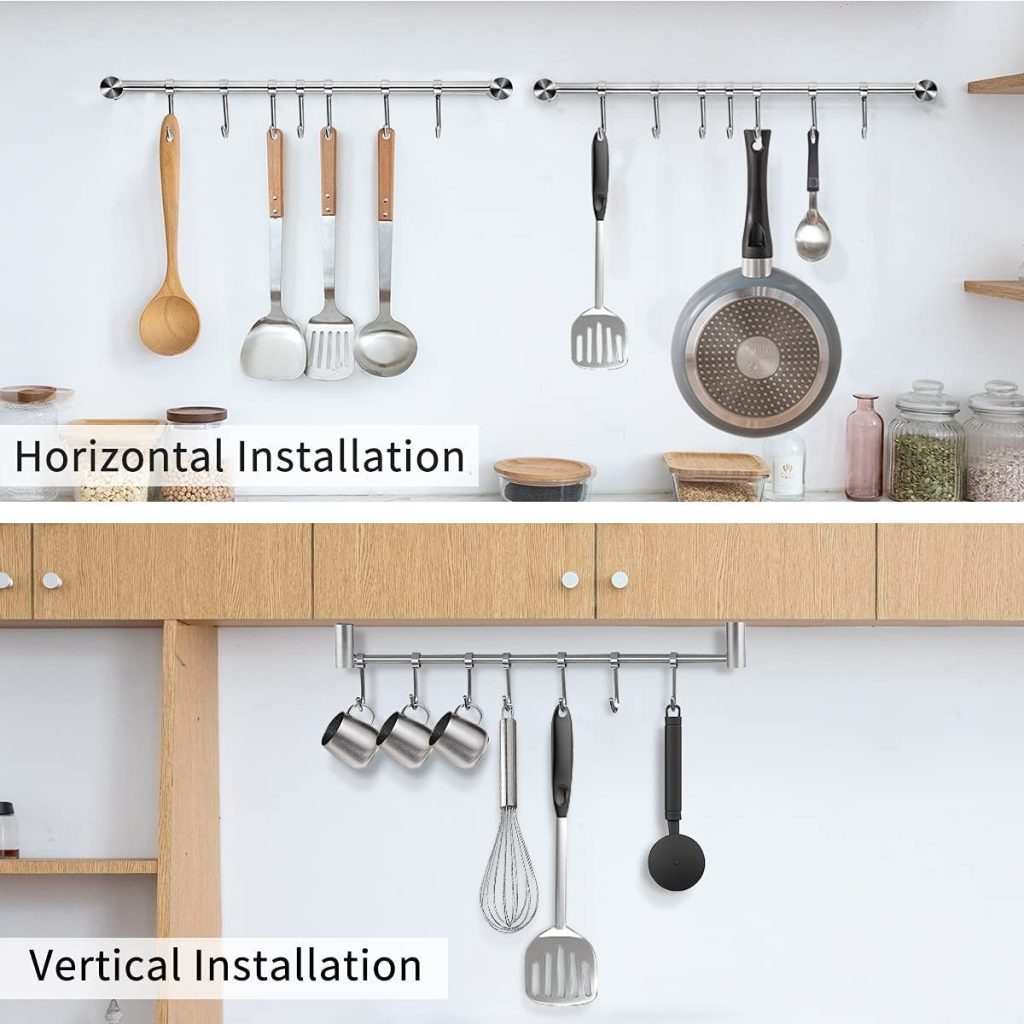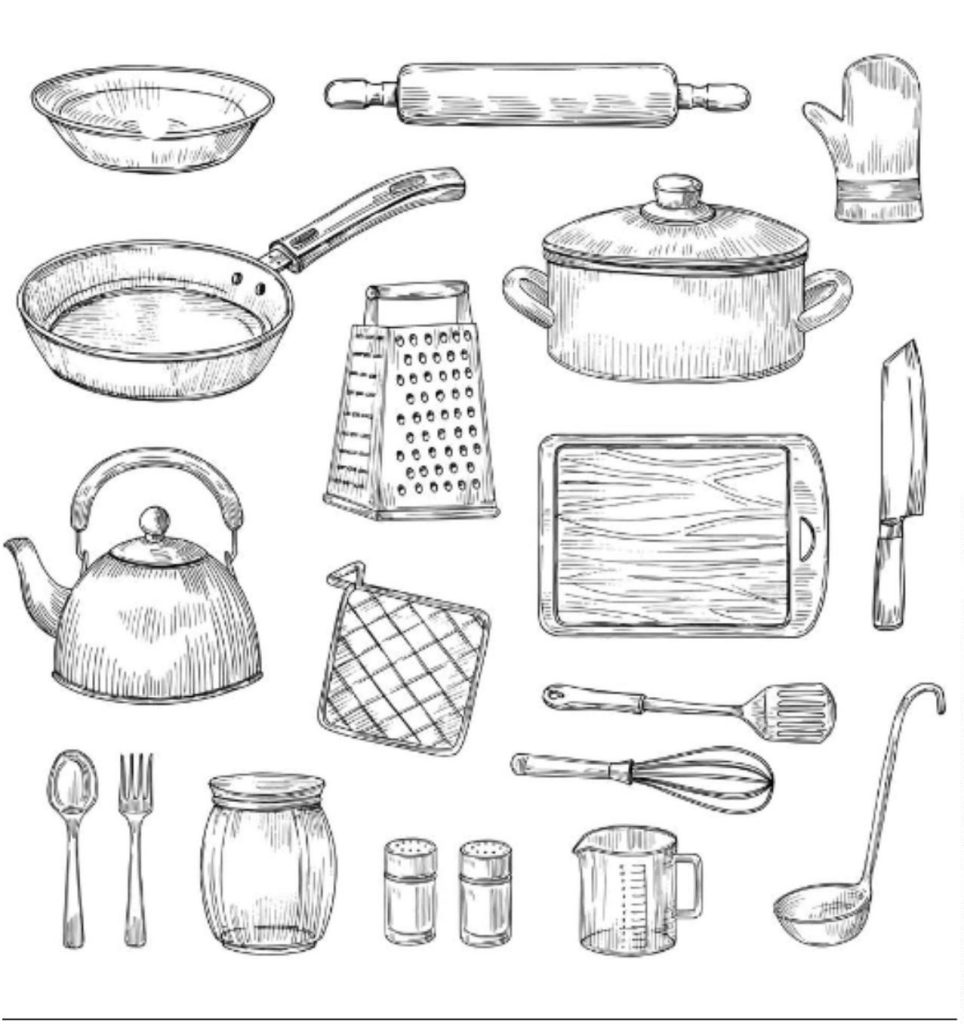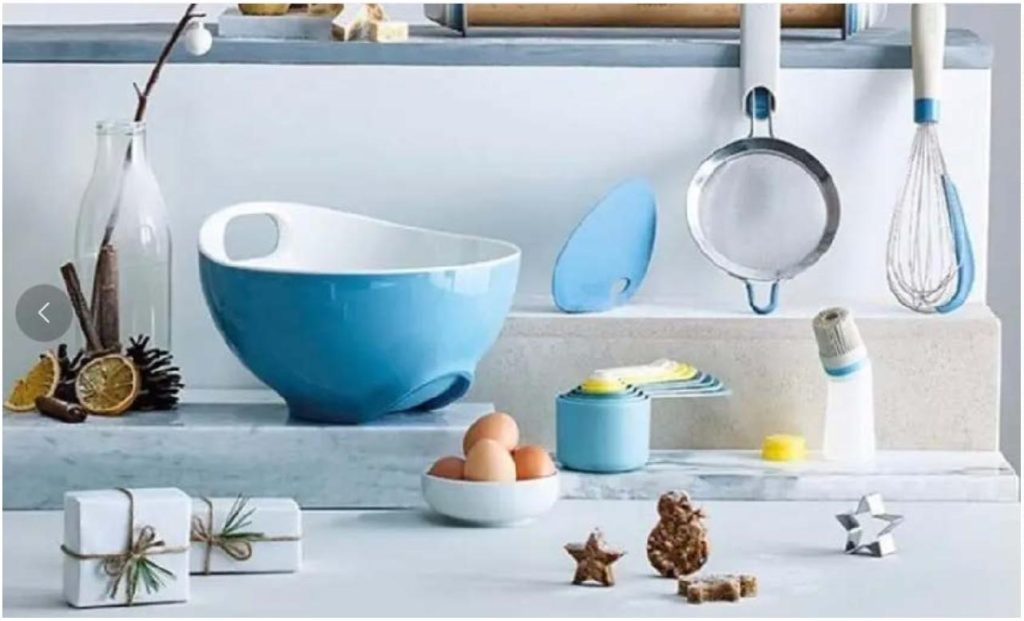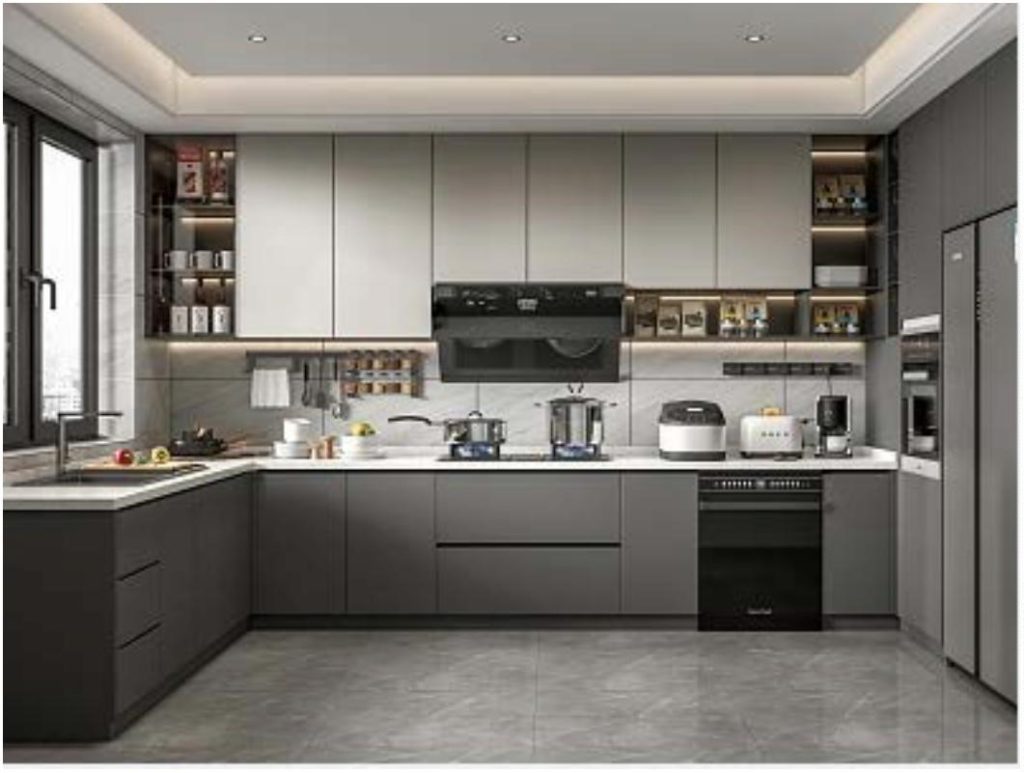The design aesthetics of kitchen appliances has become an indispensable part of modern family life. From simple functional tools to innovative designs that are both practical and artistic, how do kitchen appliances meet functional needs while improving the taste and comfort of the overall kitchen space through aesthetic design? This article will explore the evolution of kitchen appliance design aesthetics, analyze current design trends, and look forward to possible future development directions.
The evolution of kitchenware design reflects people’s pursuit of quality of life and aesthetics. Traditional kitchenware emphasizes functionality and durability, but with the changing times, designers have begun to focus more on user experience and visual beauty. From the selection of materials to the exquisite craftsmanship, modern kitchenware must not only meet practical needs, but also be in harmony with the overall kitchen decoration style and personal taste.
The main trends in contemporary kitchen appliance design include the integration of simple modern, retro revival and innovative technology. The simple modern style emphasizes simple lines and clear functions, pursuing the perfect combination of simplicity and practicality; retro revival combines traditional elements with modern technology, becoming the focus of family kitchens with classic appearance and practicality; the integration of innovative technology has made some kitchen appliances and utensils not only improve the efficiency and accuracy of cooking, but also have a sense of fashion and high technology, becoming the new favorite of modern families.

The Perfect Combination Of Function And Aesthetics
Explore how functionality and aesthetic design complement each other in modern kitchens? In modern society, the kitchen is not only a place to cook food, but also the center of family life and social interaction. In this key space, kitchen utensils need to not only meet functional needs, but also be aesthetically designed to blend with the kitchen environment and personal style. The perfect combination of function and aesthetics is the goal that designers are constantly pursuing. It not only affects the user experience, but also affects the visual effect and practicality of the overall kitchen.
Candice Olson, a famous Canadian designer, emphasizes that design is not only about beauty, but also about practicality and functionality. She is good at combining practical design with exquisite decoration to create spaces that are both visually attractive and meet the needs of residents.


1. The Importance of Elements: Discusses how designers can consider form and function to enhance the user experience.
The primary task of modern kitchen appliance design is to improve the user experience through elegant appearance and ergonomic design while meeting functional requirements. For example, the handle design of knives should be in line with the holding habits of human hands, and the handle design of pots should consider comfort and safety to ensure that it is not only effective during use, but also makes users feel comfortable and confident. Designers also often incorporate innovation and technology into designs to meet modern people’s high requirements for functionality and efficiency. For example, some kitchen appliances can improve the accuracy and convenience of cooking through intelligent design, while having a stylish appearance, perfectly integrating into the lifestyle of modern families.
2. Design trends: Introduce the current popular kitchen appliance design trends, such as fresh simplicity, retro style, etc.
As lifestyles change, the design trends of kitchen appliances are also evolving. Fresh and simple and modern retro are the current popular design styles. Fresh and simple design focuses on simple lines, clear functions, and elegant colors, which is suitable for people who pursue a simple lifestyle. Modern retro combines traditional style with modern technology, retaining the classic appearance while improving practicality and durability.
3. Philosophy: Balance between functionality and practicality
The design of modern kitchen utensils pursues not only functional satisfaction, but also how to improve the quality of life of users through design. A good design is not only beautiful, but also takes into account the user’s ease of operation, cleaning convenience and safety. For example, the blade of the knife should be sharp and durable, and the handle design should be ergonomic so that the user feels comfortable and confident when using it; the design of the pot needs to take into account the heat conduction during cooking and the anti-scalding design of the handle to ensure safety and efficiency during the cooking process.
4. Aesthetics and personalization: seamless connection from vision to actual operation
Aesthetics plays a vital role in kitchen appliance design. Designers focus on how to create visual beauty through lines, colors, materials and shapes, making the kitchen a beautiful landscape in the home. Modern kitchen appliances are no longer limited to simple functions, but incorporate artistic elements and fashion sense, which complement the overall kitchen decoration and personal style. For example, the choice of materials such as stainless steel, ceramics, wood and plastic, as well as the design styles of modern simplicity, retro revival or modern technology fusion, all provide users with more choices to meet different aesthetic needs and lifestyles.
5. Contemporary design trends: Combination of simple modernity and innovative technology
One of the main trends in contemporary kitchen appliance design is the rise of a minimalist modern style. This style focuses on clean lines and functional design, pursuing a balance between sophistication and practicality. At the same time, the integration of innovative technology is also constantly promoting the advancement of design. The application of smart kitchen appliances, environmentally friendly materials, and the provision of customized services have brought users a higher user experience and quality of life.
Material Selection And Design
The impact of materials on design, such as discussing the application of different materials in kitchen utensils, such as stainless steel, ceramics, and silicone.
When we think about the design of kitchen appliances, is material selection more than just about aesthetics? Is it something deeper? Are designers considering functionality and practicality while pursuing innovation and appeal?
When we think about the design of kitchen appliances, is material selection more than just about aesthetics? Is it something deeper? Are designers looking for innovation and appeal while also considering the functionality and practicality of the material?
When designing kitchen utensils, material selection is indeed more than just about appearance. Each material has its own unique characteristics and applicability, which directly affects the product’s user experience and performance. For example, stainless steel is often used for kitchen tools that are resistant to high temperatures and corrosion, while silicone is often used in the handles of cooking tools due to its heat resistance and softness. Designers need to comprehensively consider factors such as the material’s durability, ease of cleaning, safety, and impact on food.
Functionality and practicality are key points that designers must pay attention to when pursuing innovation and appeal. A kitchen appliance that looks beautiful but is inconvenient to use or does not meet food safety standards cannot really win the favor of users. Therefore, designers usually conduct in-depth material research and testing to ensure that the selected materials are not only visually pleasing, but also meet high standards in terms of functionality and practicality.
Danish designer Eva Solo is known for its simple and modern design style, while focusing on environmental protection and sustainability. They use high-quality materials such as stainless steel and glass, and pay attention to the environmental impact of the product life cycle.


1. Stainless Steel
Stainless steel is one of the most common materials for kitchen utensils. It is popular for its corrosion resistance, high temperature resistance and easy cleaning. The glossy and modern appearance of stainless steel makes it a mainstream choice for modern kitchen design. It is suitable for making knives, pots and various kitchen gadgets. It can keep clean and hygienic for a long time, but sometimes it may leave fingerprints and water stains on the surface.
2. Aluminum Alloy
Aluminum alloy is a lightweight and good thermal conductor, commonly used in pots and cookware in the kitchen. It transfers heat quickly and distributes heat evenly, making the cooking process more efficient. However, aluminum alloy products usually require special treatment to prevent direct food contact with aluminum, as long-term exposure may have adverse health effects.
3. Silicone
Silicone has excellent high temperature resistance and can generally withstand temperatures up to 250°C (about 482°F) or even higher. This makes kitchen utensils made of silicone safe for use in high temperature environments such as ovens, microwaves and dishwashers, without deformation or release of harmful substances. In contrast to high temperature resistance, silicone also has good low temperature resistance and can remain soft and elastic at extremely low temperatures. This makes silicone products safe for use in frozen foods and refrigerated environments without hardening or breaking.
Silicone has excellent softness and elasticity, making the kitchen utensils and cooking tools made of it not easy to deform and can maintain good use for a long time. This softness also makes silicone products feel more comfortable when used, not easy to slide, and improves the convenience of operation.
Silicone material is a food-grade material that usually does not contain harmful substances such as BPA (bisphenol A), is harmless to the human body, does not release toxic substances or odors, and is very suitable for the manufacture of kitchen utensils that come into contact with food. The surface of silicone is smooth and does not adhere to food residues, so it is easy to clean and maintain. In addition, silicone itself has certain antibacterial properties, which can effectively prevent the growth of bacteria and maintain the hygiene and safety of the kitchen environment. Silicone materials have good chemical corrosion resistance and are not easily corroded by acids, alkalis and chemicals. At the same time, silicone has a long service life and good aging resistance, and can maintain a good use condition for a long time.
4. Nylon
Nylon has excellent wear resistance and can maintain its original appearance and performance for a long time. This allows kitchen tools made of nylon, such as knives, spatulas, stirring spoons, etc., to withstand frequent use and long-term wear without damage. Nylon can generally withstand moderately high temperatures, generally up to about 200°C (about 392°F). This makes kitchen tools made of nylon safe for general cooking and stir-frying operations, but not suitable for high-temperature baking or direct contact with open flames.
Nylon products are usually lighter than metal products, making them more flexible and convenient to use. In addition, nylon has a smooth surface and is not easy to stick to food residues, so it is very easy to clean. Nylon has good softness and feels comfortable, and it will not damage the surface of the kitchenware or the ingredients when used. Nylon materials are also generally food-safe and do not contain harmful substances such as BPA, which is harmless to the human body.
Nylon has good resistance to common acids, alkalis and chemicals and is not easily corroded by chemicals. At the same time, nylon products have good aging resistance and can maintain good use status for a long time.
Nylon materials are suitable for the manufacture of various kitchen tools, such as knives, frying pans, spatulas, spoons, etc., and are popular because of their moderate cost and excellent performance. While meeting basic usage needs, they can also provide good operating experience and long service life.
Sustainable Design Choices: Explore the role of sustainability and environmental awareness in the design process.
With the improvement of environmental awareness, more and more consumers begin to pay attention to the sustainability and environmental friendliness of materials. Therefore, designers are increasingly inclined to use renewable materials or materials with good recyclability when choosing kitchenware materials. For example, some kitchenware brands have begun to use recycled stainless steel or environmentally friendly cast iron to manufacture their products to reduce resource consumption and environmental burden.
Spanish brand designer Lékué combines innovation and environmental protection in the design of kitchen utensils. The products they design usually use safe and environmentally friendly materials such as food-grade silicone, while focusing on the reusability and durability of the products.
With the increase of personalized consumer demand and the advancement of technology, customization has gradually become a trend in various fields, and the field of kitchen appliances is no exception. Customized kitchen appliances can not only meet consumers’ pursuit of individuality and uniqueness, but also add unique charm and functionality to the kitchen space through the innovation of design aesthetics and the realization of personalized customization.
1.Customization Trends: The rise of customized kitchenware and its impact on design aesthetics.
Consumer Demand Changes: Modern consumers increasingly seek product personalization and customization, moving beyond traditional standardized products to seek uniqueness in function, appearance, and user experience.
Technological Advances: The development of CAD (Computer-Aided Design) and 3D printing technologies has made customization feasible. Kitchenware manufacturers can quickly produce products that meet personalized requirements based on specific customer needs and design concepts.
Designers’ Innovation and Exploration: Designers are exploring how to combine functionality and aesthetics through customization to create kitchenware designs that meet various consumer tastes and usage habits. This design approach is not just about personalization but also involves in-depth exploration and application of design aesthetics and user experience.
Personalized Style Expression: Customized kitchenware allows consumers to design products based on their preferences and home style, from material choices and color combinations to shape designs, precisely reflecting individualized aesthetic needs.
2.Color and Visual Appeal
British designer Tom Dixon’s work is characterized by avant-garde industrial style and deep colors. His kitchenware designs often use metallic materials and strong modern colors, creating a strong visual impact.
Color is a crucial element in design, affecting visual perception and profoundly influencing users’ emotions, psychological state, and overall experience. In kitchenware design, different color choices convey various emotions and functionalities. Here’s how some common colors are used in kitchenware design and their potential impacts:


1.Red
Emotional Impact: Red is a vibrant and passionate color that can stimulate appetite and excitement. In kitchenware, red is often used for cookware, knives, and baking tools to add visual stimulation and energy to kitchen activities.
Functional Impact: Red can enhance the vibrancy of food colors, making the cooking process more engaging and exciting.
2.Blue
Emotional Impact: Blue is generally considered a calming and relaxing color, creating a sense of tranquility and peace. In the kitchen, blue utensils might reduce kitchen tension, making cooking more relaxing and comfortable.
Functional Impact: Blue can suppress appetite, making it suitable for tableware and drink containers to help control food intake and promote healthy eating habits.
3.Green
Emotional Impact: Green is closely associated with nature and balance, bringing a sense of calm and joy. In kitchenware design, green is often used for utensils and cutting boards, adding vitality and freshness to the kitchen space.
Functional Impact: Green can stimulate appetite and encourage healthy eating choices, making it ideal for fresh and healthy ingredients, especially for vegetarians or health-conscious individuals.
4.Yellow
Emotional Impact: Yellow is a warm and sunny color that brings joy and energy. In kitchenware, yellow is often used for mixers, juicers, and other tools to enhance the sense of happiness and optimism in kitchen activities.
Functional Impact: Yellow can brighten food colors, making ingredients appear fresher and more appealing while enhancing the overall vibrancy and excitement in the kitchen.
Personalized Choices: Discussing the role of personalized design in color and pattern selection and how it reflects unique tastes and styles.
Personalized design in color and pattern selection is not just about visual appeal but also about reflecting users’ unique tastes and styles. In kitchenware design, color and pattern can achieve personalization in various ways:
1.Reflecting User Personality and Taste
Color Choices: Users can select colors based on their preferences and home style. For instance, those who prefer a minimalist modern style might choose neutral tones or bright single colors, while those favoring a warm and traditional style might lean towards warm tones or classic patterns.
Pattern Design: Patterns can range from simple geometric shapes and artistic abstracts to traditional motifs. These patterns not only enhance visual appeal but also reflect users’ unique understanding and appreciation of art and design.
2.Improve user experience and emotional connection
Personalized experience: Customized color and pattern design can enhance the user experience and make them feel more joyful and satisfied in cooking and kitchen activities. For example, users who like baking may choose baking trays and mixers with cute cartoon patterns or bright colors to make the cooking process more interesting and creative.
Emotional connection: Specific colors and patterns can also connect with the user’s personal emotions and memories. For example, choosing kitchen utensils with family logos or personalized logos can enhance the user’s emotional connection with the family kitchen space, making it feel warmer and more comfortable.
3.Create a sense of consistency and harmony in the space and coordinate with the overall space
Personalized color and pattern design can help kitchen utensils coordinate with the style and decoration style of the overall kitchen space. This consistency can enhance the overall sense and visual harmony of the space, making the kitchen look more unified and refined.
Integrate into kitchen decoration: Explore how to integrate design aesthetics into the overall kitchen decoration style to create a harmonious and unified visual effect.
Incorporating design aesthetics into kitchen decoration can not only enhance the visual appeal of the space, but also create a harmonious and unified effect that matches the user’s taste. The following is a discussion on how to achieve the integration of design aesthetics and the overall kitchen decoration style.


1.Decide on the theme and style
Theme selection: First, you need to determine the decoration theme and overall style of the kitchen. Is it modern, traditional, country style or other styles? Different styles determine the subsequent color, material and pattern selection.
2.Unify colors and materials
Color scheme: Choose a color scheme that matches the theme. For example, a modern style might favor neutrals and fresh brights, while a traditional style might favor warm tones and classic colors. The color of your kitchen appliances should coordinate with other elements such as walls, cabinets, and flooring to create a unified color scheme.
Material selection: It is also important to choose materials that match the style. For example, a modern style may favor modern materials such as stainless steel, glass, and hard plastic, while a traditional style may prefer more traditional materials such as wood, porcelain, and ceramic.
3.Coordination and balance of design elements
Furniture and decorations: Incorporating design aesthetics into kitchen decoration requires careful selection of furniture and decorations. For example, choosing cabinets, drawer handles, and lamps that match the theme can visually enhance the overall sense and taste of the space.
Art and decorations: Consider introducing artwork or decorations such as paintings, sculptures, or green plants into the kitchen space, which can add personality and life to the kitchen and form an organic connection with the overall decoration style.
4.Balance between functionality and aesthetics
Functional design first: Although design aesthetics are important, functionality is still the core of kitchen decoration. Make sure that the design elements you choose not only enhance the visual effect, but also meet practical usage needs, such as easy cleaning and convenient operation.
Space efficiency: Design aesthetics should not sacrifice space efficiency. Properly plan and arrange kitchen utensils and furniture to ensure reasonable space utilization and keep passages and workbenches unobstructed to improve the overall user experience.
5.Innovation and personalization
Personalized Choices: Encourage innovation and personalization while incorporating design aesthetics. For example, choosing customized kitchen appliances or decorative items can better express personal taste and lifestyle.
Ergonomics and user experience
When we use various kitchen utensils in the kitchen, have you ever thought about whether the designers have considered our actual operating experience? For example, is the grip of a kitchen knife comfortable and can it reduce hand fatigue? Or is the water inlet design of a coffee pot convenient for pouring without overflowing? These seemingly small details actually directly affect our comfort and efficiency in the kitchen. While pursuing innovation and attractive appearance, do designers also pay attention to ergonomic principles to ensure that their products can give us the best experience in actual use?
The British brand Joseph Joseph not only focuses on innovation and practical design, but also emphasizes the optimization of the user experience. Their products often adopt clever functional designs, such as space saving and easy cleaning, to enhance the convenience and efficiency of users in the kitchen.
Design and Ergonomics: Introducing the application of ergonomics in kitchen appliance design and how to optimize user comfort and efficiency.
Ergonomics is a discipline that studies the relationship between humans and the work environment. It focuses on how to improve human comfort and work efficiency through design. In the design of kitchen appliances, the reasonable application of ergonomic principles can significantly improve the user’s experience and operating efficiency.


1. Comfort in Grip and Operation
Ergonomic Grip Design: The gripping part of kitchen utensils should conform to the anatomical structure of the hand, such as fitting the curve of the palm, being non-slip, and reducing fatigue. For example, the handles of knives and mixers should have appropriate thickness and surface texture to provide a good grip and stability.
Tactile Feedback: The design of control buttons, switches, or knobs should consider the user’s finger strength and movement direction, ensuring a natural and smooth operation. This includes details like the positioning of switches and the size and shape of buttons.
2. Reducing Physical Strain
Weight and Balance: The weight of kitchen utensils should be moderate, providing stability without being too heavy to avoid excessive strain on the arm and hand muscles during prolonged use. Proper weight distribution and balanced design can reduce user fatigue.
3. Optimizing Posture and Positioning
Working Height and Angle: The design of kitchen utensils should consider the user’s height and posture. For instance, the control panels of stoves and ovens should be positioned for easy access without requiring excessive bending or stretching.
Work Surface Design: The height of cutting boards and mixing tools should be appropriate for the user’s height, allowing them to maintain a natural posture during cooking, thereby reducing neck and back strain.
4. Ease of Cleaning and Maintenance
Material Selection: The materials used for kitchen utensils should be easy to clean and resistant to food residue and grease. For example, stainless steel and hard plastic are durable and easy to clean, making them ideal for kitchen utensils.
Design Details: Considerations like seamless design, detachable parts, and enhanced waterproof features can reduce the workload and time required for cleaning.
5. Safety Considerations
Non-Slip and Heat-Resistant Design: The surfaces of kitchen utensils should be treated to prevent slipping, especially in wet environments. Additionally, handles of cookware and utensils should be designed to be heat-resistant or insulated to reduce the risk of burns.


The Importance of User Experience: Analyzing How Design Aesthetics Impact User Experience from Visual to Operational Seamlessness Design aesthetics are not just about visual appeal but also play a crucial role in enhancing the overall user experience. Achieving seamless transitions from visual appeal to operational usability is key to providing an excellent user experience.
1. Impact of Visual Aesthetics
Visual Appeal: Design aesthetics can enhance a product’s visual appeal, making it more noticeable and attractive to consumers, whether on store shelves or in home kitchens. A good appearance and color selection can spark interest and curiosity, encouraging users to interact with and use the product.
Brand Recognition and Emotional Connection: Design aesthetics also help establish and strengthen user recognition and emotional connection with the brand. Through unique design styles and distinctive visual features, users can easily associate the product with the brand, fostering loyalty and long-term purchasing habits.
2. Optimization of Operational Experience
Application of Ergonomics: Design aesthetics should incorporate ergonomic principles to enhance the user’s operational experience. For example, optimizing the design of grips, buttons, and control panels ensures users feel comfortable and natural during use.
User-Friendly Interface Design: Interfaces should be simple and intuitive, allowing users to quickly understand and master the product’s functions and operational steps. Intuitive design reduces the learning curve and increases the product’s usability and user satisfaction.
3. Personalization and User Engagement
Importance of Personalization Options: Allowing users to participate in product design, such as offering personalized color, pattern, or customization options, can enhance user engagement and satisfaction. This personalization better meets individual needs, increasing their sense of ownership and loyalty to the product.
Valuing User Feedback: Design aesthetics are not static; they involve continuous improvement and optimization. By collecting user feedback and experiences, designers can continually adjust and refine product designs to better meet user preferences and needs, enhancing the sustainability and longevity of the user experience.
4. Emotional Connection and Brand Value Communication
Emotional Experience: Design aesthetics can create a positive emotional experience for users. For example, using warm colors and friendly designs can make users feel happy and comfortable when using the product.
Brand Value Communication: Excellent design aesthetics effectively convey the core values and philosophy of a brand. Whether focused on sustainability, innovation, or high quality, design aesthetics can visually and experientially demonstrate the brand’s unique attributes and value proposition to users.
User Feedback and Improvement: Discussing How User Feedback Can Improve the Practicality and Satisfaction of Kitchen Utensils Design User feedback is a crucial part of the design process, providing valuable information and insights that help improve product design, increasing practicality and user satisfaction. The following explores how user feedback can improve kitchen utensil design.
1. Collecting Feedback from Multiple Channels
User Research and Feedback Collection: Designers can gather user feedback through various channels, including online surveys, focus group discussions, social media platforms, and customer service feedback. These channels can cover the opinions and needs of different user groups, helping designers gain a comprehensive understanding of user experiences and perspectives.
Field Observation and User Testing: Sometimes, directly observing users in actual usage scenarios or conducting user tests and prototype trials can provide more specific and real-time feedback. By observing user habits and pain points, designers can identify potential areas for improvement.
2. Analyzing and Organizing Feedback
Systematic Feedback Organization: Feedback should be categorized and organized to identify common issues and recurring feedback. This helps determine which areas need improvement or optimization and establish priorities.
Data-Driven Decision Making: Utilizing data analysis tools allows for a more objective assessment of the importance and impact of user feedback. Data-driven decisions help design teams make evidence-based improvements.
3. Design Improvement and Optimization
Problem Solving and Functional Enhancement: Based on specific issues and suggestions from user feedback, design teams can make targeted improvements. This may include correcting inconvenient design elements, adding functional features, or adjusting material selections.
Incorporating New Technologies and Innovations: User feedback can drive the introduction of new technologies and innovations, such as adding smart controls, enhancing durability, or improving ease of cleaning, thereby increasing overall product performance and competitiveness.
4. Customer Involvement and Transparent Communication
Customer Involvement and Co-Creation: Encouraging customer participation in the product improvement process can enhance their engagement and satisfaction. For example, inviting users to join testing groups or feedback platforms allows them to feel their voices are valued and incorporated.
Transparent Communication and Feedback Loop: Design teams should communicate improvement measures and implementation progress to users promptly, establishing a feedback loop. Transparent communication can build user trust and loyalty, encouraging them to provide more high-quality feedback.
5. Continuous Improvement and Effect Monitoring
Ongoing Optimization and Iteration: User feedback should be seen as part of a continuous improvement process rather than a one-time task. Design teams need to regularly monitor product usage and market feedback, adjusting and optimizing designs based on actual results.
Market Response and Competitive Analysis: In addition to user feedback, attention should be paid to market competition and industry trends. By comparing and analyzing competing products, strategies, and improvement directions can be adjusted in time to maintain competitiveness and user satisfaction in the market.

